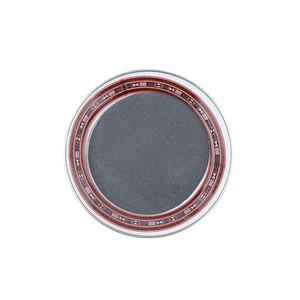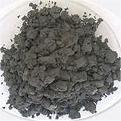Overview of XXX
Zirconium Carbide (ZrC) is an extremely hard and refractory ceramic material composed of zirconium and carbon atoms. It belongs to the family of transition metal carbides, known for their high melting points, exceptional hardness, and impressive chemical stability. Zirconium carbide offers unique properties that make it suitable for demanding environments where high temperatures, wear resistance, and corrosion are significant concerns.
Features of High Purity 20nm ZrC Powder Zirconium Carbide Nanopowder
-
High Melting Point: Zirconium carbide has an incredibly high melting point of approximately 3530°C, making it one of the most heat-resistant materials.
-
Exceptional Hardness: With a Vickers hardness rating around 2200 Hv, ZrC is harder than most steels and many other ceramic materials, providing excellent wear resistance.
-
Oxidation Resistance: Forms a protective oxide layer when exposed to oxygen, which prevents further oxidation, enhancing its high-temperature performance.
-
Chemical Stability: Resistant to most acids, except for hydrofluoric acid, and shows excellent resistance to corrosion from alkalis and salt solutions.
-
Thermal Conductivity: Exhibits good thermal conductivity, which aids in heat dissipation and is beneficial for applications involving high heat loads.
-
Nuclear Application Suitability: Zirconium carbide’s low neutron absorption cross-section makes it attractive for use in nuclear reactor components.

(High Purity 20nm ZrC Powder Zirconium Carbide Nanopowder)
Parameters of High Purity 20nm ZrC Powder Zirconium Carbide Nanopowder
The high purity 20nm ZrC powder, also known as Zirconium carbide nanomaterials, have specific parameters that can affect their performance and characteristics in various applications. Some of the most common parameters include:
* particle size: The smaller the particle size of the powder, the higher its surface area and reactivity. This means it can provide better catalytic activity or other properties for certain applications.
* temperature range: Zirconium carbide has a melting point of around 1573°C, so it needs to be stored and used within this temperature range. Any deviation from this can lead to changes in its behavior or stability.
* pH value: Zirconium carbide is sensitive to pH values, with an optimal range between 4 and 6. A change in pH can affect its adsorption ability or reactivity with other substances.
* porosity: Porosity refers to the amount of space between particles in a powder. Lower porosity leads to higher surface area and reactivity, but may also make it more difficult to handle and store.
It’s important to note that these are general guidelines, and the specific parameters of a given Zirconium carbide powder will depend on its chemical composition, manufacturing process, and intended application. It’s always best to consult the manufacturer’s documentation or seek expert advice to ensure that you’re using the powder correctly and achieving its full potential.

(High Purity 20nm ZrC Powder Zirconium Carbide Nanopowder)
Applications of High Purity 20nm ZrC Powder Zirconium Carbide Nanopowder
-
Nuclear Industry: Used in fuel element cladding, control rods, and other reactor core components due to its high-temperature stability and low neutron absorption.
-
Ceramic Cutting Tools: Incorporated into cutting tool materials to enhance their wear resistance and performance in machining hard materials.
-
Heat Exchangers and Furnace Components: Ideal for high-temperature applications due to its thermal stability and corrosion resistance.
-
Wear-Resistant Coatings: Applied as coatings on metal parts subject to severe wear or erosion, such as pump impellers and valve components.
-
Aerospace: In high-temperature and high-stress applications within jet engines and spacecraft due to its thermal and mechanical properties.
-
Chemical Processing Equipment: Components in contact with corrosive chemicals where resistance to both wear and chemical attack is crucial.
Company Profile
MyCarbides is a trusted global chemical material supplier & manufacturer with over 12-year-experience in providing super high-quality carbides and relative products.
The company has a professional technical department and Quality Supervision Department, a well-equipped laboratory, and equipped with advanced testing equipment and after-sales customer service center.
If you are looking for high-quality carbide materials and relative products, please feel free to contact us or click on the needed products to send an inquiry.
Payment Methods
L/C, T/T, Western Union, Paypal, Credit Card etc.
Shipment
It could be shipped by sea, by air, or by reveal ASAP as soon as repayment receipt.
FAQs of High Purity 20nm ZrC Powder Zirconium Carbide Nanopowder
Q: How is High Purity 20nm ZrC Powder Zirconium Carbide Nanopowder produced?
A: High Purity 20nm ZrC Powder Zirconium Carbide Nanopowder is typically synthesized through carbothermal reduction of zirconium dioxide (ZrO2) with carbon at very high temperatures.
Q: Is High Purity 20nm ZrC Powder Zirconium Carbide Nanopowder biocompatible?
A: While zirconium itself has good biocompatibility, specific studies are needed to determine the biocompatibility of zirconium carbide for medical applications.
Q: How does High Purity 20nm ZrC Powder Zirconium Carbide Nanopowder compare to tungsten carbide in terms of hardness and thermal properties?
A: Tungsten carbide (WC) is slightly harder than zirconium carbide and has a higher melting point, making WC more commonly used for applications requiring extreme hardness and heat resistance.
Q: Can High Purity 20nm ZrC Powder Zirconium Carbide Nanopowder be machined or shaped easily?
A: Due to its extreme hardness, zirconium carbide is challenging to machine using conventional methods. It is typically formed through powder metallurgy techniques, sintering, or used as a coating applied by thermal spray or CVD/PECVD processes.
Q: What is the main advantage of using High Purity 20nm ZrC Powder Zirconium Carbide Nanopowder in nuclear applications?
A: Its low neutron absorption cross-section and high-temperature stability make it an ideal material for components in nuclear reactors, minimizing interference with nuclear reactions while maintaining integrity under extreme conditions.

(High Purity 20nm ZrC Powder Zirconium Carbide Nanopowder)





